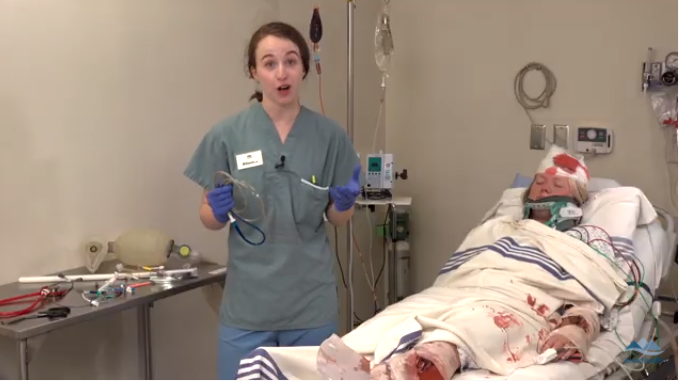During the regular Grade 10 school year, students attend a P.A.R.T.Y. like no other, but due to COVID-19, this year’s P.A.R.T.Y. is a bit different.
P.A.R.T.Y. (Prevent Alcohol and Risk-Related Trauma in Youth) is about prevention and awareness.
It’s a program coordinated by Island Health and offered to Grade 10 students across Vancouver Island.
Participants learn from police officers, paramedics, firefighters, emergency room doctors and nurses, forensic nurse examiners, and trauma survivors about what it is like to experience physical trauma.
Under normal circumstances, participants and their teachers travel to their local hospital to meet with those who deliver the program.
With visitor restrictions to hospitals currently in place, delivery of the in-person P.A.R.T.Y. program has been paused and many dedicated volunteers have stepped up to deliver the program virtually.
Emergency room physician, Jeff Eisen, has volunteered for the program since 2014. In his role, Eisen, who volunteers on his days off, regularly sees patients with severe, preventable injuries.
“The most difficult thing for me switching to a virtual delivery was having to take what was a 40-minute presentation in the hospital and distill it down to 10 minutes, since the virtual program is shorter,” he says.
“But I love how the students are keen to ask questions and I think my message resonates with them.”
The program follows the path of an injured patient, from their accident or crash scene, to the emergency room, rehabilitation, and recovery.
Most injuries are both predictable and preventable, and this P.A.R.T.Y. is about learning to recognize potential injury-producing situations in order to make informed choices and adopt behaviours that minimize injury risk.
Some of these volunteers are using web-based video conferencing for the first time, while other dedicated volunteers work behind the scenes to facilitate the sessions, field questions from teachers and students, and play videos.
Many are retired and have never used this sort of technology, but they have put in extra time and training to learn new skills because they believe in the program.
Brain injury survivor Brenda Clayton explains that she learned how to share her car crash story virtually using her tablet.
“I practise my presentation with Island Health staff before interacting with the students so that I remember how to do it without cutting anybody off,” she says.
The program highlights what happens when a young person makes a decision that results in an injury that could change their life forever, consequences such as permanent brain or spinal cord injury, burns, paralysis and even death.
Cody Johnson survived a serious accident when he was thrown out the front window of his truck into a wire fence.
He shares his fishing trip story with the participants, which resulted in him losing three of his best friends that day, one of whom was a new father.
“What I hope the students take away from my live, virtual presentation is definitely not to make the same mistakes I did,” says Johnson.
Retired paramedic George Sedola shares stories with the students about what it was like for him as a paramedic to be the first responder on the scene at an accident.
“I’m an old guy who isn’t that tech-savvy with computers, so it’s been an adjustment for me to learn how to use new technology and shorten my presentation,” he said. “But if I can impact just one young person to know better and do better, then it was worth my time.”
To learn more about the P.A.R.T.Y. program, visit the Island Health P.A.R.T.Y. program website.






